The story of Queensbury Station: Queensbury Rules
The story of Queensbury Station: Queensbury Rules
‘Unique’ is an overused word and it would be wrong to apply it to Queensbury station. Because it wasn’t – well not quite. Like the former junction at Ambergate in Derbyshire and Shipley today, it boasted a triangular layout with inner and outer platforms on all three sides, as well as a signal box at each corner. The first train pulled in during the Spring of 1879.
The line north snaked its way to Keighley, embracing viaducts, tunnels and lofty views over the industrial sprawl – earning it the affectionate title of ‘The Alpine Route’. To the south-west, via the glorious gloom of Queensbury tunnel, lay Halifax whilst Bradford nestled to the east, also linked by a hole through the hill. Much to the annoyance of locals, Queensbury itself was perched high above its station, connected by a steep, meandering lane which the Great Northern Railway grudgingly lit after some protest.
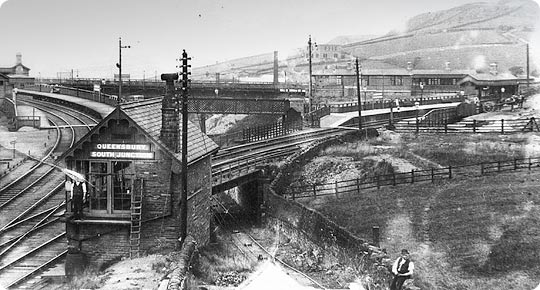
Photo: Bradford Central Library
By the time Eric Brook joined the railway in 1935, the Queensbury lines had been swallowed up by the LNER. As a bright 15-year-old, he became a ‘block lad’ at Laisterdyke East signal box – recording the comings and goings in the Occurrence Book – and rose to become a porter-signalman at Holmfield before the Second World War called.

He didn’t see action and ended up in Ireland via a brief foray to the French coast. But the railway wanted him back. “They traced me to a NAAFI in a field in Belfast” recalls Eric. “Somebody shouted out ‘2634125 Brook’. I said ‘I’m not coming now – I’m queuing for my bun!’ ‘I think it’s your ticket home’ came the reply. I was off!”
Back in Bradford, the Inspector offered Eric the signalling backwater at Thornton where he stayed for a year. “Then Clayton box became vacant” he remembers, “but it started at two o’clock in the morning. The Inspector had a bit of difficulty filling Clayton. I was a nit for going!” Eric was not an early riser as the Station Master would discover to his cost, occasionally covering for his signalman’s late arrival.
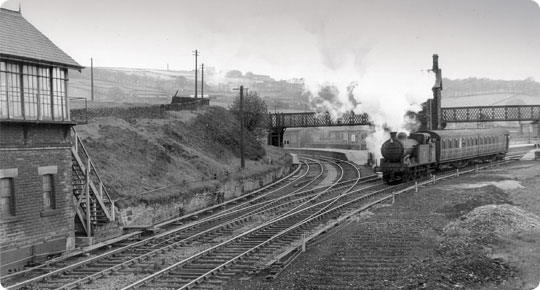
Photo: P Sunderland
The North and South Junction boxes had long gone when Queensbury beckoned in 1944. Only the 40-lever frame on the Bradford side remained but that was open around-the-clock. “A much busier box” crows Eric. “Trains ran through the station every hour and they all came in at once – first you’d get the outers and then, an hour later, you’d get the inners. One train used to deliver a fish wagon.” A red ‘eyeball’ was fixed to the wall – an electrically operated device which alerted the signalman to a train waiting to come in from Keighley. As Eric recollects “you couldn’t see the Keighley side so that was marvellous.”
But there was a downside – the walk to work from his home on Horton Bank Top. “I used to come across three or four fields in the pitch black. I fell over cows and horses – just walked into them. There was a sheepdog – it never barked, just followed me until I was off the premises. One night I crossed this lane and ran smack into a corrugated lamp-post. There was blood everywhere.”
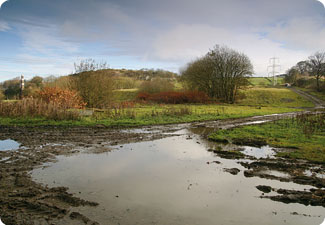
Colour photos: Four by Three
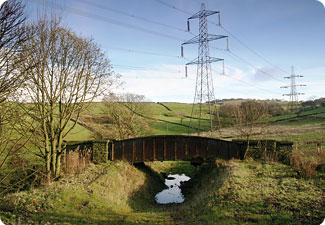
He shared the box with Arthur Clark – a professional signalman who knew the rules and used them to his advantage – and a young lad called Bill Ball, with whom he’s still friends. Thanks to payment by ‘time and motion’, they only took home two pounds eight shillings a week – same as the porters who “sat on their backsides!”
There were few mod-cons – just a stove and a bench. Eric ate a lot. “I used to take two dozen slices of bread for each shift, all full of beetroot sandwiches.” The cold certainly made its presence felt. From time-to-time the points froze and an icy draft blew up through the frame. Rugs and coats were deployed as insulation. Fleeting glimpses of two young ladies undressing in the window of a terrace opposite occasionally warmed the cockles, but we’ll draw a veil over that story. More than those girls did!
“We had a big fire but the railway coal that we had delivered wasn’t a patch on the engine coal” bemoans Eric. “So we stopped the drivers that we knew and got a few lumps off. And we’d have that stove roaring! When I relieved Bill, I’d say ‘well the weather doesn’t look good – are you going home?’ He’d have a look out and say ‘no, no, I’ll stop’ and he’d spend the shift with me! I taught him how the play chess – took me about six months. We had some laughs!”
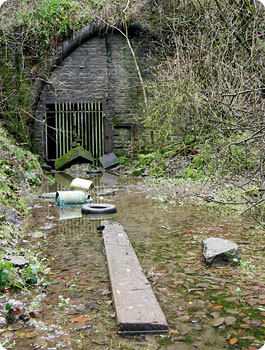
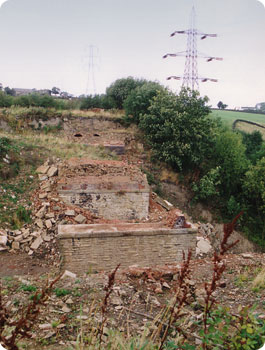
But there was discipline too. Eric was once hauled before management in Leeds after “rambling a load of gobbledegook” in the Occurrence Book. Arthur Clark reported him. And his recall of Rule 55 left something to be desired as the Inspector pointed out after his biennial knowledge test.
In 1945, an extra two shillings and sixpence a week enticed Eric south to Rotherham. He stuck in there for a year before leaving the railway to drive a bus. By the time Queensbury box rang its last regular bells in 1955, all his former colleagues had moved on. Excursion trains made occasional visits in the years that followed but the station was finally torn from the map in November 1963.
Today, the triangle has lost its shape and the platforms engulfed by 20-feet of landfill. A lonely rusting footbridge rests below the station house, next to the spot where the signal box once stood. Queensbury tunnel leaks like a baby but still clings to life. The viaduct on the Bradford-Keighley side was not so lucky.
Walkers and cyclists are now breathing some life into this industrial burial ground, through the extension of the Great Northern Trail, a footpath occupying two sections of trackbed. Queensbury’s geometric masterpiece has not returned but its place in railway history cannot be erased. As Eric Brook proudly states, “It was the cream!”
More Information
| Queensbury Community Website | Our History: Queensbury station |
| Queensbury Community Website | Our History: Queensbury tunnel |
| Queensbury Railway | History and photos of the Halifax-Queensbury line |
| Sustrans | Details of the Great Northern Trail |
| Disused Stations | Queensbury station history and photographs |






